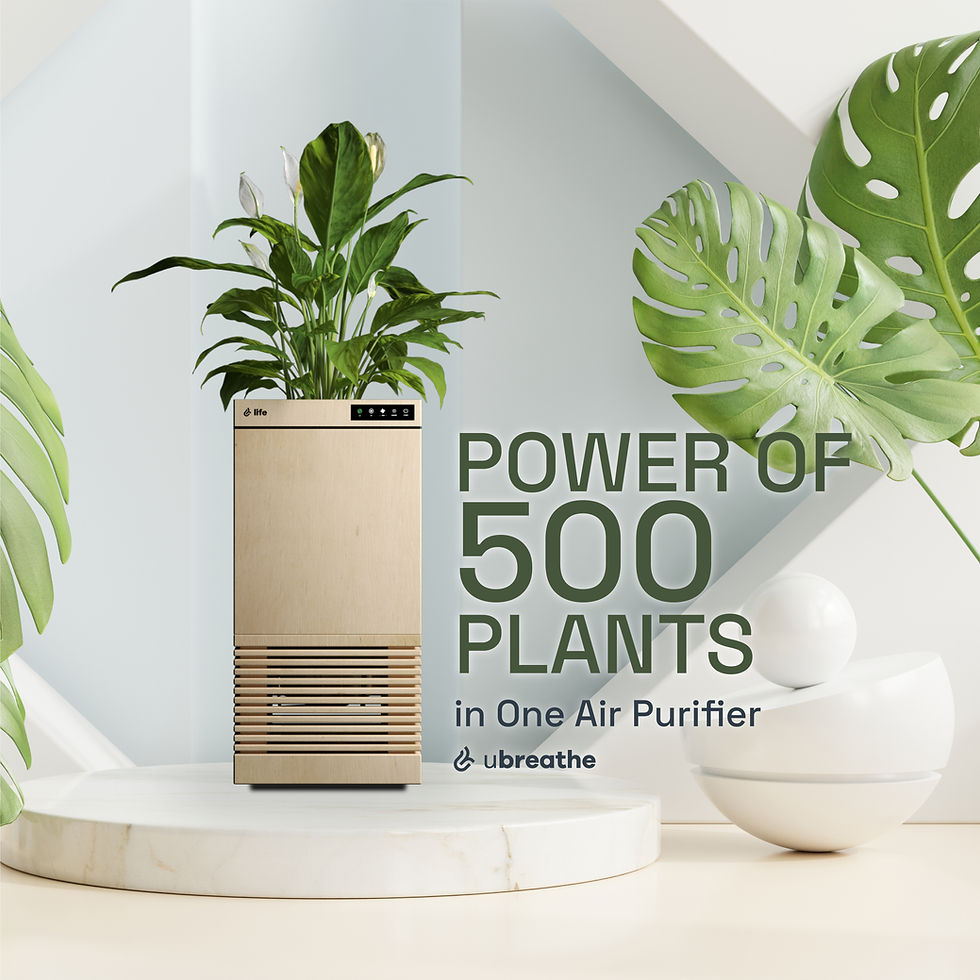From Smog Outside to Indoor Air Pollution Inside: How to Keep Your Family Safe
- uBreathe

- Aug 28
- 3 min read
Have you ever wondered about the quality of the air in your home? While closing the windows can help reduce some outdoor pollutants, it's essential to recognize that indoor air can be improved even further!

Although outdoor smog and visible air pollution often make headlines, indoor air quality is an area where we can take proactive steps to create a healthier environment. In fact, with the right measures, you can transform your indoor air into a refreshing and safe haven for your family. From reducing dust particles to minimizing allergens and harmful chemicals, there are countless opportunities to enhance the air you breathe at home. Embrace the chance to take charge of your indoor air quality and enjoy a healthier, happier living space!
What is Indoor Air Pollution?
Indoor air pollution refers to the build-up of harmful pollutants within homes, offices, or closed spaces. These pollutants include volatile organic compounds (VOCs) from paints and furniture, smoke from cooking, pet hair, mold spores, and even toxins released by cleaning products.

Sources of Indoor Air Pollution:
Cooking fumes and smoke – When oil, gas, or solid fuels burn, they release harmful particles and gases that linger in the air and affect your breathing.
Household cleaning products releasing VOCs – Many cleaning sprays and disinfectants emit volatile organic compounds (VOCs) that irritate the lungs and pollute indoor air.
Dust mites and pet hair/fur – Microscopic organisms in dust and tiny flakes of skin or fur from pets trigger allergies and asthma.
Poor ventilation and trapped outdoor pollutants – Without fresh airflow, pollutants like smoke, pollen, and car exhaust get trapped indoors and accumulate.
Use of synthetic fragrances and sprays – Air fresheners, perfumes, and scented candles release hidden chemicals that degrade air quality over time.
Furniture, carpets, and paints emitting chemicals – New furniture, wall paints, and carpets often release formaldehyde and other toxins, leading to long-term indoor pollution.
Why Indoor Air Can Be Worse Than Outdoor Smog?
Many people believe shutting windows keeps pollutants out, but in reality, it often traps toxins inside. Without ventilation, indoor pollutants accumulate, and studies show indoor air quality can be 2–5 times worse than outdoor air. This means while you are protecting yourself from smog, your indoor environment may be doing more damage silently.
Health Risks of Indoor Pollution:
Short-term effects – Breathing polluted indoor air can cause constant eye irritation, a scratchy throat, headaches, or even sudden dizziness, making everyday life uncomfortable.
Long-term effects – Over time, it increases the chances of asthma, chronic breathing problems, heart issues, and in severe cases, even cancer.
Vulnerable groups – Children, elderly family members, and anyone with existing health conditions are far more sensitive, which means the impact hits them harder and faster.

How to Protect Your Family?
Ventilate while cooking – Keep windows open or use an exhaust fan when cooking to let out harmful smoke and fumes.
Limit chemical cleaners – Try using natural alternatives like vinegar or lemon instead of harsh chemical-based products that release toxins.
Add indoor plants – Simple houseplants can act as natural filters, helping absorb harmful gases and freshening up your home.
Clean regularly – Frequent dusting and vacuuming reduce allergens like dust mites, pet hair, and mold spores.
Use an air purifier – A reliable purifier like uBreathe continuously cleans the air, making it safer for you and your family to breathe.
Why uBreathe is Different:
Most air purifiers only filter air mechanically. uBreathe takes a natural approach by combining the power of plants with advanced technology. This unique bio-filtering system ensures that your indoor air is not only free from pollutants but also enriched with natural freshness. Unlike regular purifiers, uBreathe amplifies the air cleaning efficiency of plants, making it a smarter and more sustainable choice for modern homes.
Indoor air pollution is a hidden danger that most families ignore while focusing only on outdoor smog. The truth is, the air inside your home can be up to five times more polluted due to cooking fumes, VOCs, dust, and poor ventilation.
This silent threat directly impacts your family’s health, leading to allergies, asthma, and long-term respiratory issues. Protecting your loved ones requires simple steps like better ventilation, natural cleaning methods, and adopting indoor plants. But the most effective solution is investing in a trusted uBreathe air purifier, which blends plant power with technology to deliver truly clean air. By improving indoor air quality, you create a safe, healthy home where your family can breathe freely. Don’t just shut the windows against smog outside and take action inside to ensure real home air safety.






Comments